new posts in all blogs
Viewing: Blog Posts Tagged with: BBMTC, Most Recent at Top [Help]
Results 1 - 25 of 45
How to use this Page
You are viewing the most recent posts tagged with the words: BBMTC in the JacketFlap blog reader. What is a tag? Think of a tag as a keyword or category label. Tags can both help you find posts on JacketFlap.com as well as provide an easy way for you to "remember" and classify posts for later recall. Try adding a tag yourself by clicking "Add a tag" below a post's header. Scroll down through the list of Recent Posts in the left column and click on a post title that sounds interesting. You can view all posts from a specific blog by clicking the Blog name in the right column, or you can click a 'More Posts from this Blog' link in any individual post.
Guest Expert: Laurel Marshfield

The Da Vinci Code Model
Around Christmastime, a number of years ago, I was browsing at a local Borders bookstore (now, sadly, extinct), looking for, among other things, thrillers by the mega-bestselling author, Dan Brown.
A client of mine wanted to construct his thriller-in-progress in the “Brownsian” manner, using densely applied historical research. Largely because — as he readily admitted — he was mesmerized by the fact that The Da Vinci Code was then enjoying headline-making sales. (It eventually sold 81 million copies worldwide, more than any other book in publishing history).
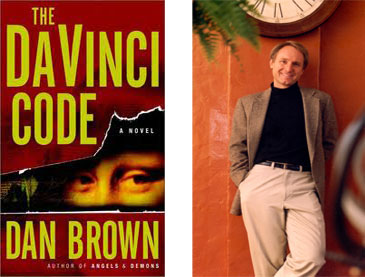
Contemplating such an unheardof level of success (even before its true measure was fully known), my client surmised that Dan Brown must be onto something. And, oddly enough, I noticed something intriguing that seemed to speak to my client’s theory, when I at last found the bookstore shelves housing what was then Dan Brown’s four-novel
oeuvre.
It was a special-edition Da Vinci Code, filled with photographs, illustrations, and pages of background material — all designed to lure readers into the dense forest of factual content the author had woven throughout his fictional world. Hmmm, I thought, interesting.
:: Nonfiction Can Promote Fiction?
Moments later, I asked myself this question: If “nonfiction” (in the form of historical research) could be used to make fiction far more substantive and, as a result, far more appealing . . . might not nonfiction benefit from the same approach?
How would that work, though? Nonfiction, after all, is already factual. So there’s not the same substance-adding benefit that novels acquire by marrying fact and fiction.
After several seconds spent mentally flailing around, this question appeared unsolvable, at that moment, so I turned it over to my subconscious — hoping that part of my mind would have more luck (as it almost always did).
:: Can Nonfiction Borrow from Business?
Several hours later, I was back in my office doing some online research, when I came across the words “white paper” three times in the space of ten minutes. Was my subconscious suggesting . . . ? And if it was, what would a white paper for a nonfiction book look like? My creative mind refused to comment. It was time for my planning mind to take over.
Picking up a pen (I had long ago realized that a pen in the hand is worth bushels of words on the page – words yielded up more easily than with a keyboard) these brief notes appeared:
• Premise: White papers for nonfiction “expertise” books = novel idea.
• Question: But what would a white paper for a nonfiction book look like – what would it focus on?
• Answer: It would focus on a book-specific problem and solution; in other words, the book’s c
Or How to Jazz Up a Writing Career with Holiday Promotions
Expert: Carolyn Howard-Johnson
Have you heard of The Christmas Box by Richard Paul Evans?
It was originally self-published. Evans believed in himself (and his book) when big publishers didn’t. When it did well, “lo and behold,” as they say in the Christmas stories. Someone saw the light.
The motto here, for writers, is “Seasonal material sells.” Especially things that can be given reasonably inexpensively during gift-giving seasons. Seems that books fit the bill. They’re generally $15 dollars or less. They lend themselves to the inspirational (always high on the list of gifts people like to give). And they lend themselves to great cover and book design including religious, whimsical, cartoons, and on and on. Oh, and books are easily and inexpensively mailed or e-mailed!
So, are you using the seasons to build your writing career?
There are all kinds of ways to do it. Magdalena Ball and I are seasonal poetry partners. That is, we have written the Celebration Series of chapbooks. She contributes half the poems, I the other half. And we also share publishing and marketing skills. Blooming Red: Christmas Poems for the Rational is the Christmas entry for that series. We also have entries for Mother’s Day, Father’s Day, Valentine’s Day and even one with a feminist theme to celebrate women for—maybe their birthdays?
Gordon Kirkland is a humorist (Canadian, bless his little soul!). He has written a couple of very funny (and extremely giftable!) books including Holly Jolly Frivolity and The Plight Before Christmas. I met him when we both spoke at a writers’ conference and I know he believes in marketing almost as much as he loves writing.
And that brings me to using seasons to market any of your work. Here are some ideas for doing that, even if you don’t have an entry in the seasonal category (Yet!)
- Write articles (like this one?), using your own themes related to your books or whatever else strikes you. They can be used as guest posts on others’ blogs or on your own blog or Website.
- Offer a discount on a book to be used as a greeting card or casual gift. See how Magdalena and I did it for Blooming Red.
- Cross promote with a fellow author on a book in your genre. People who read cozy mysteries likely read more than one a year. And they often love to give them as gifts. Both authors’ contact lists should be full of people who read cozy mysteries so offer them all a two-for one special—a new one for themselves and another for a gift.
- Share a list of holiday (or Easter or Valentine’s) gift book ideas. Post it on your blog. Put it in your newsletter. As an example see Karen Cioffi Ventrice’s list. A list like this is Zen. Help yourself. Help other writers. There is even a way to make this idea into a seasonal catalog and produce it as an income-producing ve
Guest: Andrea Susan Glass
According to Forrester Research, digital book sales tripled to $966 million in 2010 and are set to almost triple again by 2015. Last summer, Amazon said sales of ebooks for its Kindle reader had far eclipsed hardcover book sales. In about 2007, Amazon introduced its Kindle ereader and Barnes and Noble soon followed with the Nook. Then iPhones got an app to read ebooks, and next it was the iPad and other copycats. You can even read an ebook on your PC or Mac with the free software Kindle for PC (or Mac). And now the libraries are offering electronic books that are being converted by a company called Overdrive.
Don’t you think it’s time for you to write your ebook?!
I always suggest authors keep several things in mind when planning to publish an ebook. First is determining the author and reader motivations. Why do you want to write an ebook, and what’s in it for the reader? You might write fiction because you have a story to tell; or nonfiction to share your passion or expertise teaching a skill or solving a problem; or to build your visibility for your business; or to add an income stream. The reader is generally motivated to buy the ebook because of entertainment or education—they’ll enjoy your novel or they’ll learn something from your nonfiction.
Second is determining if you should publish an ebook, a pbook (print), or both. Ebooks have a lower cost to publish, are quicker to write because they can be shorter, are more profitable, have a targeted market—and they’re hot! Your only costs are editing, formatting, and a book cover. You can accomplish these for under $500 in most cases. Ebooks are faster to write because they can be shorter and generally you’re writing about an area you know well, so you can write like you’re talking to someone. You make a decent profit because you have little invested and you can sell them for around $2.99 to $9.99 with Amazon taking only 35%. Additionally, you write an ebook for a targeted market so they’re easy to locate and that makes your promotion more effective.
Third is determining which format. Right now there’s Kindle which uses a Mobi format, and Nook and all the others which use ePub. You can go to https://kdp.amazon.com and sign up for a Kindle account, follow the formatting guidelines, convert your book from Word to Mobi, and upload it to Amazon. You can also go to www.smashwords.com and convert your book to ePub for the other readers. Or you can hire someone who specializes in ebook conversions, an emerging industry! This depends on your level of patience!
Fourth is determining your keywords so readers can find you. You’ll want to use them in your title or subtitle, your ebook description, your bios, book reviews, websites, advertising, and marketing. You can find good keywords using the Google keyword tool at https://adwords.google.com/select/KeywordToolExternal.
Lastly, think about how you’re going to market your ebook. Who is your ideal reader and where can you find them? Marketing ebooks in the virtual world is much more effective than marketing
Guest Expert: Joel Friedlander
The move to e-books has brought with it a new challenge for book cover designers, amateur and professional.
The first challenge, of course, if you’ve been designing book covers for any time, is to understand exactly what an e-book cover really is.
Unlike print books, which we can pick up and examine, e-books don’t exist in any physical reality other than as a computer file. So how can they have a cover?
And since an e-book is simply a computer file with text that will reflow to the form and shape of the reader into which it is loaded, e-books can’t be said to have any particular shape.
So when it comes time to design a cover for your e-book, it’s important to realize that the little rectangles we’re used to seeing that represent the cover of printed books are simply a convention. There’s no particular reason an e-book cover needs to be a tall rectangle, other than to announce to the potential reader that it is, in fact, a “book” of some kind.
Some retailers have even tried to mandate that e-book covers conform to the tall rectangle, which is a bit silly considering that printed books come in many shapes and sizes.
But more than anything else, designers and do-it-yourself self-publishers have to address the challenges of this new form in a way that helps them sell books.
Over the past few months I’ve been looking at hundreds of e-book covers, and I’ve found that there are ways you can succeed at this task. I’ve boiled the keys to success down to just three, and here they are:
3 Keys to e-Book Cover Design Success
1. Simple– This is the most important key of all. While a 6″ x 9″ printed book has 54 square inches of space to play with, an area large enough for a pretty decent painting or illustration, maybe 40 to 100 words of copy for nonfiction books, awards, blurbs, subtitles, tag lines, series logos as well as the required title and author, e-book covers do not.
The overriding fact to remember about e-book covers is the very small size they will be viewed in by people searching on the sites of e-retailers.
So simplicity becomes one of the chief virtues of successful e-book cover design. Especially if you are adapting a print book cover to your e-book, take out any elements that won’t be legible or readable at this small size. I know it’s hard, but just toss them, you’ll be happier in the end.
Keep the cover to the title, author name and one graphic that instantly communicates something about the tone or genre of the book.
2. Small– This one is super important, and makes sure that all the work you’ve put into your cover is going to pay off.
Your book will be shown in several ways on sites like Amazon, Smashwords and iBookstore. I think you really need to design for the smallest size of all, and here’s why. That size is the one that your book is displayed in when you do a search.
People who already know about your book are going to head straight for it anyway, those aren’t the people we should be concerned about. It’s the others, people looking for something but not sure exactly what, that should be our primary focus.
And that’s where the search results page comes in. If you look at a page of search results on Amazon, for instance, you’ll be presented with a screenful of tiny images and links via the bo
Guest Expert: Phyllis Zimbler Miller
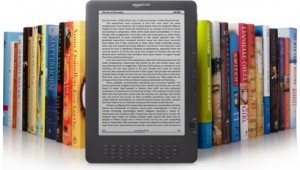
The explosion of ebooks onto the Internet, starting with the first Kindle device in November 2007, has put power into the hands of authors, who can now self-publish their own ebooks.
And more and more digital reading platforms, from Kindle’s Fire tablet to Barnes & Noble’s Nook to the iPad to Toshiba’s Thrive tablet to any number of other ereading platforms, have exponentially added to this opportunity.
Here are some facts from the October 31st Wall Street Journal article “Secret of Self-Publishing: Success” by Jeffrey A. Trachtenberg:
Vanity presses have been available for decades. But thanks to digital technology and particularly the emergence of e-books, the number of self-published titles exploded 160% to 133,036 in 2010 from 51,237 in 2006, estimates R. R. Bowker, which tracks the publishing business.
Amazon.com Inc. fueled the growth by offering self-published writers as much as 70% of revenue on digital books, depending on the retail price. By comparison, traditional publishers typically pay their authors 25% of net digital sales and even less on print books.
How can you as an author take advantage of this self-publishing ebook power?
1. Any of your previously published physical books – no matter how many years ago – can now become ebooks.
If you have had books traditionally published, check your contracts. If the publisher does not own the digital rights, you can create ebooks of your books.
Or if the publisher did own the ebook rights but the overall rights for your books have reverted to you, you should now be able to publish your books as ebooks. (Check with your lawyer about this second example.)
2. Any new books that have NOT been accepted by a traditional publisher can be self-published as ebooks.
There is something important to consider here:
You may self-publish the ebook first with the thought that perhaps a traditional publisher will then pick up the rights to publish the physical book. On the other hand, having an ebook perhaps may discourage a traditional publisher from picking up the rights to publish the physical book.
In other words, you have to decide which path you want to take. If you do decide to first try for a traditional publisher without self-publishing the ebook, that option is always available to you at a later date.
The same common sense that applies to self-publishing a physical book applies to self-publishing an ebook:
• Make sure there is a minimum of spelling, grammar and wrong words in the text. Consider hiring a professional editor.
• Choose a book title, if possible, that creates a visual image in a reader’s mind.
• Have an attractive cover design – one that is easily “read” on the Internet. Consider hiring a professional book cover designer.
• Format the ebook correctly for each platform (Kindle, Nook, etc. use different software). Consider hiring a professional ebook converter �
Expert: Carolyn Howard-Johnson, author of the multi award-winning Frugal Book Promoter: How to get nearly free publicity on your own or partnering with your publisher
(updated and expanded to 416 pages!)
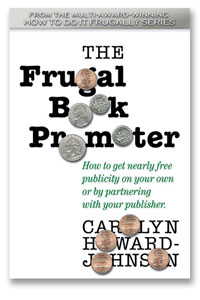 As the author of The Frugal Book Promoter and other award-winning books in the HowToDoItFrugally series of books, I probably shouldn’t have made any mistakes with the online launch of the second edition. And I probably wouldn’t have if I had been taking my own advice.
As the author of The Frugal Book Promoter and other award-winning books in the HowToDoItFrugally series of books, I probably shouldn’t have made any mistakes with the online launch of the second edition. And I probably wouldn’t have if I had been taking my own advice.
In the first edition of The Frugal Book Promoter I warned people that it’s never too early to begin promoting a book. That was years ago! Sometimes we need a boot in the pants to remember what we already know. I shouldn’t have waited so long to begin making lists and checking them twice!
And since that first edition was published I had built a great platform that I thought would be sufficient. And that brings me to my biggest mistake. Hubris. We authors who have been around awhile are often sure that we can rely on what we have done and who we already know. My contact list included Denise Cassino, an online launch specialist (www.mybestsellerlaunch.com), and I knew I could rely on her. I have a huge contact list I had been collecting assiduously. What more did I need?
Well, The Frugal Book Promoter also warns authors to categorize their lists. Which I did. But I didn’t have a specific category for the kinds of writers and people who run writers’ services I could ask for bonuses. Bonuses are those things that we offer people when they buy our book on a certain day to try to raise our sales rank. I pulled together a great bunch of bonuses, but after the fact I kept remembering folks I could have asked so it wasn’t nearly as long as it could have been and these bonus partners help an author get the word out (online) about your book.
Further, I took a vacation just before the launch so I hadn’t given myself much thinking time. Again hubris. I reiterate in my book that getting publicity and doing promotion is a partnership. The people an author or publisher hires to help them can’t do it on their own. They need both ideas and cooperation from the author.
Hubris. I had launches before. One for my novel at the Autry Museum of Western History. One for my book of creative nonfiction at my home. Several at bookstores for chapbooks of poetry. But they were realtime launches. This online launch was different. Launches designed to raise ratings at online bookstores are done online and needed lots of techy expertise. At least I knew that I needed Denise!
Services for online launches are like a bowl of minestrone. They come in different sizes, at different prices. The different ingredients are designed to do different things for the health of your book. The more you know about them before you start, the easier it will be to make choices based on the time you have, the money you have and the needs of your particular book.
I knew that when you hire any publicist, you aren’t just buying services. You’re buying their network, their conta
Guest Expert: Aggie Villanueva
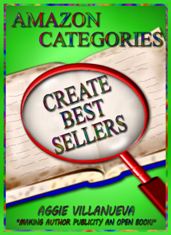
Amazon is much more than just the world’s largest bookstore.
As an author you’ve made sure your book is listed on Amazon.com because everyone in the writing/promotion fields says you must. So what’s the big deal? You’ve actually made more sales to family and friends on your own than through Amazon.
Valid question. But here’s a question more to the point: once your book is published on Amazon do you let it just sit while waiting for sales that never come? That may be why you’re not making sales to anyone but family and friends. You haven’t yet learned how to “work Amazon,”
Did you know they give you free marketing youcould never afford to buy? But only if you work their simple system.One reason you don’t make many sales through Amazon could be you haven’t yet discovered that your book’s catalog sales page is shrewdly structured to promote itself continually and on multiple levels, if you work it.
I’m a writer and author publicist and I know a good marketing setup when I see one.I’ve spent a lot of time researching the Amazon setup with no professional help except for calling their number and asking; which doesn’t always garner an answer. I’ve studied their setup from the purely non-techie author’s perspective, which is admittedly, what can they do for ME.
And the answer is a whole heck of a lot. A lot more than just listing my book in the world’s largest retail book store where it would otherwise get lost in the crowd, as it does at most online bookstores.
Other book sellers just aren’t set up the same way. That’s why the algorithms they use are a closely guarded secret. For example, I could not have earned the title “multiple category bestseller” so easily elsewhere. And I couldn’t have held that status steadily over the years, especially for self-published books, if I hadn’t made use of the free automated publicity engines in place for me at Amazon.
Supplyingthe means to earn multiple category bestsellers is just one of the site’s many paybacks. Unfortunately these promotional layers and automated systems are unknown to many authors. Also unknown is the importance of, and how easy it is, to ranktop 100in several high-profile lists, some without even selling one book. Yet being seen in these lists nearly always generates sales.
One of my books also made the reader’s choice Top Rated list in three Kindle categories simply because I paid just a little attention to the Customer Review section of my Amazon sales page. It also made the top ten in several Tag Communities.
And I’m just skimming the surface of the ratings you can earn and the lists you can top. Once there you may forever place those titles in your promotional material. Readers trust even an unknown author if you have rated highly in lists, and/or earned bestseller status, maybe trusting you enough to buy your book though they’ve never heard of you.
Amazon wisely structured their site for auto-promotion, promotion and more promotion for each and
Guest Expert: Phyllis Zimbler Miller
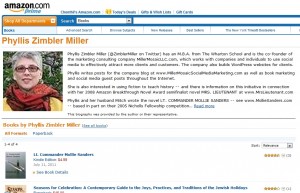 If you are traditionally published and your publisher hasn’t done this for you, or if you are self-published and didn’t know to do this yourself, take advantage now of an Amazon author marketing opportunity by creating an Amazon Author Page.
If you are traditionally published and your publisher hasn’t done this for you, or if you are self-published and didn’t know to do this yourself, take advantage now of an Amazon author marketing opportunity by creating an Amazon Author Page.
I just self-published my 86-year-old father’s comedy short story book (The Love Life of Howard Handsome and Other Short Stories) through Amazon’s CreateSpace. When the book was first displayed on Amazon, if you clicked on his name you went back to the book listing shown in search results for his name (the screen BEFORE you click on the book title and land on the actual book page).
Once I set up his Author Page, when you click on his name you now go there.
What is an Amazon Author Page?
An opportunity to let prospective book fans know more about you, the author.
On your Author Page, besides having a short bio and author photo, you can upload:
• Your blog posts (you can have feeds from more than one blog)
• Author events
• Additional photos
• Video
• Your latest tweet on Twitter
Of course all your books are there too.
To create an Author Page:
Go to Author Central at https://authorcentral.amazon.com/ and click on “Join Now” next to the home button.
Answer the questions and then get your confirmation email. Once you’ve done this, you can start adding info to your Author Page.
And while sometimes you may want to send people to a specific book page of yours on Amazon, other times you may want people to see everything you have on offer.
In this second case you can create a shortened URL for the link to your Amazon Author Page. (As an example see my Amazon Author Page at http://budurl.com/PZMAmazonPage ) Then you can give out this shortened URL when you want people to see all your books at one time.
Having a robust Amazon Author Page gives you an excellent opportunity for prospective book fans to “connect” with you. Make sure you take advantage of this opportunity!
Amazon Kindle tip: If you don’t have a Kindle, you can still buy Kindle eBooks and read these on your computer. Go to Kindle Support and you can download free Kindle software for a PC or a Mac.
 Phyllis Zimbler Miller (@ZimblerMiller on Twitter) is the co-founder of the marketing consulting company MillerMosaicLLC.com, which works with clients including book authors to effectively use social media marketing. Phyllis is also a ficti
Phyllis Zimbler Miller (@ZimblerMiller on Twitter) is the co-founder of the marketing consulting company MillerMosaicLLC.com, which works with clients including book authors to effectively use social media marketing. Phyllis is also a ficti
Guest Author: Rai Aren
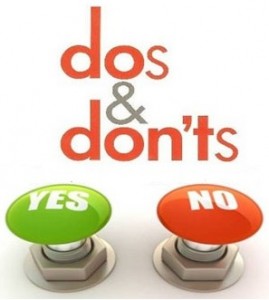 As an author, your success is ultimately in your own hands. We all have limited time, and that time must be split between writing and book marketing, amongst other things. Deciding how to spend that marketing time to get the best return on our investment is a critical success factor for our books. So which book marketing efforts work, and which ones don’t? These are my top three tips to help you find and connect with your audience and keep it.
As an author, your success is ultimately in your own hands. We all have limited time, and that time must be split between writing and book marketing, amongst other things. Deciding how to spend that marketing time to get the best return on our investment is a critical success factor for our books. So which book marketing efforts work, and which ones don’t? These are my top three tips to help you find and connect with your audience and keep it.
1. Consider what’s unique about you and your stories and share it
You are the very best ambassador for your work. Whatever you found compelling enough to write about is likely deeply embedded in your life, your personality, and your interests. The stories you tell are a part of you, and it’s well worth your while share those unique aspects with your readership. If you found something interesting enough to write a book about, chances are there are quite a number of people out there who enthusiastically share that interest.
For example, I have a lifelong interest in Egyptology and adventure and mystery stories. I’m completely fascinated by the paranormal, by space exploration and ancient mysteries. I am also deeply moved by the animal world. I regularly share things related to those interests because they infuse my writing. When you focus on your passions, writing can flow more easily and be one of the most pleasurable things you can do. Share that enthusiasm and passion with your readers. They pick up your books because they interest them, so it’s natural that they will be even further intrigued when you provide a window into the seeds of those tales. It always adds a lot for me when my favorite authors share insights into their stories. I really like the greater depth of meaning I get out of their books when they do.
What doesn’t work? Giving nothing of yourself beyond asking people to buy your books. Don’t make it an empty experience for your visitors. Open up and let people get to know you as an author. People enjoy getting a sense of the human being behind the book, and the opportunity to understand and appreciate where the inspiration came from.
2. Add value and interest at each outing
Personally, I think it’s best to consider every single blog post, tweet, and status update as a public relations opportunity to show yourself in your best light and generate even more interest in your work. I network with a great many people online, and the ones that keep me coming back consistently offer something interesting, something helpful, and an overall positive, fun tone. They stay on course and keep their focus sharp. Your reputation is something that must be painstakingly and lovingly built, then carefully maintained. Its worth is priceless.
It’s also a good idea to remember that people have a huge choice of where to spend their online time. If you want to keep your readers engaged with you, nurture your relationships with them through what you choose to share online, and respond to them. Remember your ambassadorial status with regards to your work and consider how your actions reflect on that. Make valuable contributions and allow yourself to shine by putting your work and your reputation in their best lig
Bringing Great Authors To the Literary Realm
Guest Author: Amy Lignor
In 2007, as we all know, Amazon came out and launched an ‘e-reader.’ Many thought this was a joke, but I can honestly say that there is no one laughing now.
Digital publishing and branding have become the ultimate ways to get ahead, or even recognized, in the cutthroat recession-wary publishing world as it stands today. Publishers are looking at the bottom line. Are they poor? Are publishing houses becoming dinosaurs? No. Make no mistake, people, not matter what the agencies and publishers tell you total book sales in the United States last year came in at 13.9 billion dollars. Random House, the top rung of the so-called “Big Six Publishers” reported profits of 2.5 billion. However, a large percentage of revenue is now being recorded as digital downloads. And this area is growing bigger every year.
There will always be those out in the world who want that paper copy – that copy that they can hold in their hands. In fact, this writer feels about books as deeply as a hockey player feels about the ‘smell of the ice.’ I love the smell of a new book, and e-readers take that particular enjoyment away. BUT, there are a great deal of authors out there right now who are truly magnificent, yet they are not getting the opportunities to be published. There are barely any agents or publishers out there right now that would’ve told you twenty years ago that YA would ever be a big market. What they didn’t see coming was J.K. Rowling and Stephenie Meyer, and the like who took the world by storm. One of the most ironic issues about new authors who do hit the market full force, is that most of them were taken on by interns or new hires in literary agency; people who just stepped in and felt as if they had to prove themselves to their bosses. Why is that? Because those new interns still knew what it felt like to read a good book. They were, and are, not yet caught up in the muck and mire of the bottom line. They take a chance and they score – simple as that.
In mid-2010, Amazon announced that they were selling MORE e-books than hardcover’s, which caused a division in the literary society. The division and arguments still abound about the digital world becoming ‘King’ one day, but whether or not anyone likes it, the internet IS the ‘King’ of the 21st Century. Many young adults (and some adults, I have to say) are learning their grammar and penmanship through text messaging – “How are you?” has now become “How r u?” Everyone is on the go, and their e-readers, Kindles, etc. make life a whole lot easier than having to trudge to the library, or spend a greater amount of money in the bookstore. Readers can simply call up Amazon, call up the book they want, and ‘boom,’ there it is on the device that they have grown to love as much as their cell phones.
One of the biggest moments for digital publishing, in my mind, was when the New York Times suddenly realized this growing phenomenon and – whether they liked it or not, and most did not – they began a digital bestseller list; an e-book ‘Top Ten.’ Not only that, although the New York Times Book Review is still a monolith in the publishing world, they are quickly being set aside for the ultimate re
Guest Expert: Sharat Potharaju
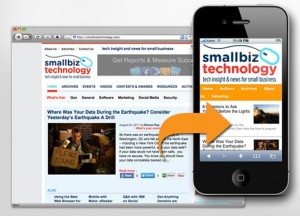 Research by Gartner has forecasted that by the year 2013, mobile phones will overtake PCs as the most common Web access device worldwide.With mobile market expected to reach 1.7 billion by 2013, a major bulk of your audience will be viewing your website or blog on a screen that takes up just a few inches. The rapid evolvement of mobile ecosystem, supported by availability of high-end mobile devices (including tablets) and better internet accessibility makes it an absolute necessity for content publishers – authors/bloggers/webmasters – to provide mobile friendly content that can be consumed by your target audience, on the move.
Research by Gartner has forecasted that by the year 2013, mobile phones will overtake PCs as the most common Web access device worldwide.With mobile market expected to reach 1.7 billion by 2013, a major bulk of your audience will be viewing your website or blog on a screen that takes up just a few inches. The rapid evolvement of mobile ecosystem, supported by availability of high-end mobile devices (including tablets) and better internet accessibility makes it an absolute necessity for content publishers – authors/bloggers/webmasters – to provide mobile friendly content that can be consumed by your target audience, on the move.
Design it for Mobile, but keep the User in mind…
Creating a mobile-friendly version of your content isn’t just about reducing the form factor to fit the small screen. In fact, as a publisher you have to factor in the mobile user experience as well. The following elements will help you balance the limitations of the small mobile screen with your audiences’ expectations:
• Style your designs for mobile: Mobile Web encompasses a diverse set of elements including – different media, browser variations, screen size, connection speed, and platforms among a host of other things. Thus, when styling your mobile site it is always safer to stick to relative units and minimize scroll and page transitions. Furthermore, maintaining visual consistency with the desktop site will help in maintaining brand consistency & recall.
• Re-do for easy navigation: Research has shown that mobile web experience accounts for high bounce rates. It is suggested to focus on a few key areas of your website and eliminate links to destinations that don’t have a high mobile priority. However, be sure to add the ‘contact’ and ‘search’ link as a top-line header item for better usability.
• Use automatic redirection for mobile devices: The mobile version of your website should be automatically triggered for all mobile users. The most reliable way would be to use ‘user agent detection’, wherein a server makes a decision on what to serve based on how an incoming browser describes its capabilities. Alternatively, other devices like DeviceAtlas or WURFL, wherein real-time JavaScript requests databases to supply information on what a device can do, can also be used.
• Check for broken links: Links are the only way to traverse the web, so it’s best check for broken links periodically. Besides, it also helps to keep the links consistent with the version of content a user is viewing.For example, if a www.yoursite.com/category/article/ was the original link, make sure that your mobile visitor is presented with the mobile-optimized m.yoursite.com/category/article/, and not just the m.yoursite.com homepage.
• Resize pictures and images: Viewing a websiteon a screen with limited view requires that the images and pictures are resized for fast and easy loading. A good idea would be to resize the images on the web server as this will take significantly less time to load.
• Keep content clear and updated: With a mobile website it becomes
Land a Publisher & Sell Tons of Books?
Guest Expert: Laurel Marshfield

Is professional editing worth it?
The answer depends on just one thing: Where, in your development as an author, you currently are.
If this is the first book you’ve ever written and you’re mostly self-taught, professional editing is most likely not the only step you need to take between banging out your very first manuscript and landing a publisher.
In fact, for a first-time author with no formal training, I wouldn’t recommend professional copyediting at all.
Here’s What Authors Really Need
Copyediting (not the same as developmental editing or book-doctoring) is one of the last steps before submission. And if the basic elements of fiction (or nonfiction) are only half-realized, or missing altogether, no amount of editing for errors of spelling, grammar, and syntax; no amount of querying the absence of meaningful transitions, the presence of redundancies, or violations of consistency will matter.
An unrealized book manuscript with perfect spelling, grammar, and syntax is still a manuscript that’s not yet ready for publication.
What is needed — when that is the case — is practice: writing one book after another to learn the nuts and bolts of craft, as well as how to coax the magic of art onto the page.
Most successful authors produce between two and ten practice books before their “first” book is awarded a pub date. To snag the brass ring of publication, an author must first be a longtime student of the form.
But many otherwise sensible people don’t see the need. “I’m a fan of So-and-So,” they say. “I see how his fiction formula works. And I can do that, too – only a thousand times better.”
Every Author’s Path to Publication
The thing is, books are far easier to read than they are to write. Even the most clichéd genre fiction requires a surprising amount of skill – skill that its author worked to acquire. Realizing this fact — that practice will get you where you want to go — is the ultimate encouragement. It means there’s a path to this place (though each path is individual, with its length, twists, and turns unique).
Is It Time for a Manuscript Evaluation?
Let’s say you’ve done a bunch of practice books, cultivated your skills for a number of years, and you’re solidly at the next stage of your development as an author — what then?
You might be ready to hand your manuscript over to a developmental editor for a written manuscript evaluation. An eval will tell you where you’ve succeeded and what you’re especially good at — as well as where you need to think things through a bit more and do some additional work.
With your evaluation in hand, you can nurture the less well-developed parts of your manuscript, learn new skills, restructure if needed, and rewrite — perhaps several times more.
After that, you may be ready for a developmental edit, if other issues remain; or, you may be ready for the final polish of copyediting. It all depends.
![]()
A new kind of giveaway turns contacts into evangelists to sell more books
Guest Expert: Penny C. Sansevieri
 We have marketed hundreds of books over the years, and many of our authors have launched their own book giveaways. For them and every other author we’ve spoken with, those giveaways just don’t do much to generate awareness, buzz, excitement or sales.
We have marketed hundreds of books over the years, and many of our authors have launched their own book giveaways. For them and every other author we’ve spoken with, those giveaways just don’t do much to generate awareness, buzz, excitement or sales.
While book giveaways are common (a Google search for “book giveaway” yielded 1.7 million results), they don’t do much for the author, and they may even be counter-productive.
Let’s talk about why your typical book giveaway doesn’t work, and then we’ll talk about a new approach.
When we worked with Book Sweepstakes LLC to develop a new kind of Viral Book Sweepstakes platform, we knew that we needed to analyze all of the reasons typical giveaways don’t work and craft a solution that met those challenges. In fact, we wanted to go further than that; we wanted to create a platform that was inherently viral. We wanted a platform that would turn contacts into evangelists to promote the book, bring more visitors, and turn them into evangelists to bring even more people.
First, if you’re going to do a giveaway I suggest that you look at all of the elements of a successful campaign.
Have a great prize: First, a book isn’t the best prize to give away. Why?
Well, it’s a low dollar item. To attract attention, to get visitors to come to your site, to get them to fork over their email address, and to get them talking about your book so more people come, you need a sexy prize.
Giving away a book has another downside: it actually undermines sales. How so? Well, you got someone to your website, and they’re interested in your book. Now, it’s time to close the sale. Sales are what you want, yes? But why should they buy now if they might win later? Bye, bye, customer. No sale today for the nice author who is giving away her book.
When we created our AME Viral Book Sweepstakes platform, we decided to give away the iPad2, which everyone really wants.
So offer a great prize!If you don’t want to offer an iPad, make sure the prize is worth at least $500.
The importance of going viral: You probably know the term going viral, where things spread from person to person, and from more people to more people, like the flu. That’s what you want for your book. You want your contacts, friends and readers to tell more people about the book. Why is that so important? Because that’s what generates sales. NPR reported that 80% of book sales are prompted by word of mouth!
A typical book giveaway certainly doesn’t drive viral word-of-mouth buzz about your book.
How to go viral: Typical giveaways stop at ‘register here to win,’ and they don’t reward people for spreading the word.
You need a couple of things to make your book spread virally, and since a typical book giveaway doesn’t do that, we set out to develop a platform that does. Here’s what it takes:
People are busy. Why should they take the time to tell others about your book? You need to offer an incentive. Remember that great prize – the iPad2 – we talked about above? In addition
Guest Expert: Aggie Villanueva

There was a time when we only needed to format and publish our book manuscripts in print form and eBook versions for simple e-readers such as the Kindle. That day is gone.
If we don’t want to ignore a huge population of readers, we now must think beyond print and electronic pdf galleys. We also need to include apps in our publication formats (interactive eBook applications). Interactive eBook apps have already become one of the preferred reads for the under-30 reading population, and has spread quickly to all ages.
Until recently this was done mostly for children’s books, but more and more non-fiction and how-to books are published as apps to take advantage of the interactive capabilities that lends itself so readily to teaching. And you need look no further than Vook applications to see how popular this format is for fiction too. You may have even purchased some of the wonderful children’s eBook apps or Vooks for your own family.
But the best way to get a truly interactive eBook is to hire someone to format it as an app that is recognizable tosmart-phones, Apple and Android compatible mobile devices, iPads etc. This is a completely different platform and used to be too expensive for the average writer like me. But I’ve found a company who made it affordable, Digi-Tall Media, the company formatting, finalizing, helping me to distribute and assisting in marketing. Because they are affiliated with eighteen other distributors they pack some marketing power. And they have additional web presence with their online storefront.
As always, I’ve retained all rights as the self-publisher of this upcoming book. Owner Victoria Freudiger is patiently and caringly working with me as she formats it as a print, electronic eBook (for Kindle) and an interactive application she will upload for me at the Apple iTunes Store, Apple Bookstore and Android compatible apps sites. Entry Way Publishing, also Victoria Freudiger’s company, designed my book cover. The e-Book craze hit this seasoned company early on. They’re frontrunners with a great deal of knowledge and energy they’re now putting into creating interactive eBook apps too.
You can also simply Google something like “format eBooks as interactive apps” to get a list of companies that createtheseapplications. As you shop around you’ll find that creating an interactive eBook app nowadays can be comparable to the cost of professional editing and cover design, and varies into the very high end. With Entry Way Publishing I didn’t have to break the bank to break into this publishing format.
There are several ways to keep down the cost. Authors need not pay to create a mini-movie out of their books, animated to the hilt like a Disney classic.Non-fiction eBookapplications such as my how-to, in my opinion, are more effective with the simplest of interactive components.
My upcoming eBookapp, uses page-embedded videos and simple animations forhyperlinking readers to online pages with contests, updates, discussions and much more, and of course all the other
Expert: James Simpson
Books have long been a staple of human entertainment and knowledge. By contrast, games are relatively new to the scene, but they are taking an ever-increasing role in entertainment and even to an extent in knowledge.When you get down to it though, are the two really all that different?

Books hold an amazing power to open up the human mind and to tap into its true potential through imagination. Games do the same thing by allowing people to amplify that imagination in anyway that they desire. Sure, books and games have a very different presentation, but they tend to work towards the same goals.
Let us not forget that the roots of games were largely text-based. You still have your text-based online games, telnet and forum-based role-playing games, and more modern games that rely as much on the story as they do on the fancy graphics, sound, and gameplay.
The stigma that once lingered around gaming has long since faded as games have gone mainstream thanks to the likes of Farmville, Angry Birds, Bejeweled and the likes. Hundreds of millions of people play games every day, from all walks of life, all corners of the Earth and all age groups. Books may hold the crown for the most mainstream form of entertainment and learning, but games aren’t far behind.
However, even with all of this growth within the gaming world, it would be a mistake for an author to fear this new form of artistic expression. Authors must embrace this coming future of gaming to their advantage. As I’ve said, games and books have a common foundation, so why not leverage one to promote the other? In order to compete in this age of the internet, authors must think outside of the box to gain or expand a readership, and games certainly do not fit within those well-defined walls of literary marketing.
This isn’t to say that in order to be successful as both a new and seasoned author you need to go out and develop a AAA title to go along with the book—not at all. On the other hand, you do have several options depending on your material. Casual games are the most obvious option and come with the widest audience. Pairing these books up as prizes or promotions alongside simple arcade-style games (like what Freado does) is one option.
Another option is to accompany the literature with “gamification” techniques through social media or you own website, or even building game mechanics right into the material itself. A famous example of this is the upcoming Pottermore for the Harry Pottery franchise. While the series of books is over, a gaming layer can be used in this unique way to continue the story and even gain new readership.
The possibilities are limitless as the internet and other digital mediums continue to expand their reach throughout the world. It is imperative that authors evolve their work and the marketing that goes along with it to keep up with the evolving ways that people consume media; otherwise, you face an uphill battle. Games inspire interaction that has never fully been possible with books alone, which is why the integration of games makes perfect sense and is a new
Guest Expert: Sherrod Story
I have to tell you – in all honesty – I have no frickin’ idea how to market a book. None! I have a Twitter account, a blog, a Facebook account for me, and one for my book LOL, and I’m on all of them every single day. That’s all I know to do.
Oh, that and beg for Twitter followers and blog subscribers, and thank everyone profusely when they bite, which works, believe it or not. I’ve asked around, read articles, and the general consensus for all my online research efforts can be condensed into one clever little word: engage.
Talk. Shock of all shocks, write! Tell people what you’re doing, why, how you’re being driven witless in your efforts to find time to write, and then be generally interested and supportive of what they’re doing.
I freely admit, I completely disdained using Facebook before I self-published my book (is it ok to say the name Fiona Love? You said no self promotion…but that’s more like a detail?) on Amazon Kindle. But I know the deal, and so do you – Facebook is what’s up.
Anybody with any kinda story to tell is on Facebook, making friends and commenting and liking and every other thing I haven’t figured out how to do yet.
I’ve sold some books too. More importantly, I now feel like part of a community. Which is weird. I’m a stereotypical lone wolf writer. I don’t know these people. I probably couldn’t recite any of their names if someone paid me – although I do recall cover art; romance novel cover art is fabulous! – but I certainly recall their kindness, their willingness to reach out to me to say thanks for wanting to be their friends.
It means something that a virtual stranger would take the time to share a word of encouragement. It means someone else is going through what you are, whether you’re books are selling like discounted money-stuffed wallets or like a slow, erratic faucet leak.
As engaged as we all are thanks to social networking and technology, it can be lonely in this realm of publishing if you’re not Nora Roberts or Jaid Black, and you don’t have many readers. Hell, a writer without readers is like a book with no words. I’m not being dramatic, either. Writers will brood about writing stuff that no one reads. I do. It doesn’t stop me, but there it is.
Online, engaging with a coterie of strangers who share your desire to be read and followed, you can share in the success of your peers. Sure it’s not as good as accepting your own accolades, who are we kidding? But interaction is important. Which brings me back to my only word of wisdom for those marketing a book: engage.
That, and this phrase: online marketing after self-publishing is a marathon, not a sprint. Some clever person I can’t recall the name of said that, and I believe him. So engage, consistently, with any and everyone who shares your interests and few who only might. You’ll make a few hits. I promise.

Sherrod Story is the pen name for Kellye Whitney. She was born in Chicago Illinois, and is an award-winning magazine editor. “Fiona Love” is her first offering on Kindle. A lifelong romance fan, she has been writing about the same family of characters – the Cambridges – since she was 13
 As part of my volunteering activities to serve the community, I teach public speaking to 14 year old school children at a local school on Saturday mornings. Sometime ago, one of the challenges I noticed was that students would not applaud and cheer when one of their peers completed a speech on stage. Worse, many of them would speak to each other and be distracted while one of their classmates was speaking. As you can imagine, this was demotivating for the young speakers, many of whom were giving a speech for the first time in their lives.
As part of my volunteering activities to serve the community, I teach public speaking to 14 year old school children at a local school on Saturday mornings. Sometime ago, one of the challenges I noticed was that students would not applaud and cheer when one of their peers completed a speech on stage. Worse, many of them would speak to each other and be distracted while one of their classmates was speaking. As you can imagine, this was demotivating for the young speakers, many of whom were giving a speech for the first time in their lives.
Then, I introduced a simple idea which has changed the atmosphere of these sessions considerably. With the help of a few “student officers”, we divided the class into four “houses” (groups) that competed against each other in a friendly manner. Next, we started giving points to the group that was the most enthusiastic audience. Overnight, we had a class full of hyper-interested students that were willing to listen carefully to their classmates’ speeches and cheer their progress.
The human brain is wired to play games. Competition, evaluating and managing risks, teamwork, chasing goals while overcoming obstacles and staying within boundaries (rules) and keeping score are part of what make us human.
What is a Game?
Jesse Schell, author of the excellent book – ‘The Art of Game Design’ offers this definition for a game:
“A game is a problem-solving activity, approached with a playful attitude.”
Now, what if we phrased the problem of marketing and promoting books using the “lens” of games? Then the game can be defined for readers in the broadest possible manner as:
“A game where you solve the problem of discovering new books and evangelizing them while having fun”
Now, maybe you’re thinking that this will never work. People are busy. They are serious. They don’t have time to play games. If this is your thought, then I ask you to reconsider … after thinking about the following examples:
 1. The stock market – The stock market is a game. There are rules. There are goals (make as much money as possible while managing your risks.) And it can often be fun (especially if you make money!)
1. The stock market – The stock market is a game. There are rules. There are goals (make as much money as possible while managing your risks.) And it can often be fun (especially if you make money!)
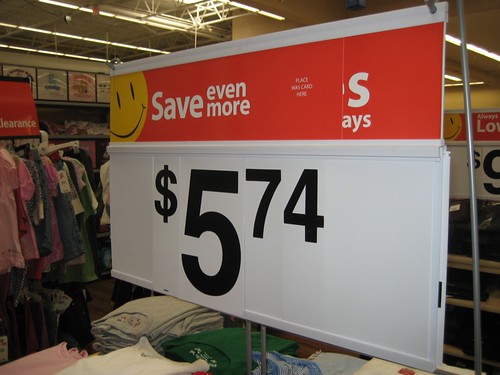 2. Discount sales – Have you ever been to a Labor Day sale at your local fashion store? Have you felt the rush of excitement as you get your hands on your favourite brand at 50% off? Here again, there is a problem (get a good product at a lower than normal price), there is competition and it is mostly fun.
2. Discount sales – Have you ever been to a Labor Day sale at your local fashion store? Have you felt the rush of excitement as you get your hands on your favourite brand at 50% off? Here again, there is a problem (get a good product at a lower than normal price), there is competition and it is mostly fun.
 3. The Wii
3. The Wii
Guest Expert: Phyllis Zimbler Miller
 Thanks to the ease of publishing books and eBooks today, there are now even larger numbers of books from which you want your own book to stand out.
Thanks to the ease of publishing books and eBooks today, there are now even larger numbers of books from which you want your own book to stand out.
And thanks to the opportunities on the Internet you can achieve this goal. However, you need to think creatively “outside the box” to utilize elements that relate to your book in order to engage the attention of readers.
Let’s start with children’s books and move along the age continuum:
If you have a children’s picture book, you already have pictures that can be used on t-shirts, caps, cups, banners for book signings, etc.
Then think about what else you can do with your book’s character, stories, location, historical period, etc. to attract attention.
Susan Chodakiewitz, author of the children’s picture book “Too Many Visitors for One Little House,” is also a music composer. She created a mini-musical of the book’s story and assembled an acting troupe to perform the mini-musical. Performances of “Too Many Visitors” have been given at libraries, schools, and stores such as The Gap.
In addition, she created a dance video to teach children the dance performed in the show. Scroll down the home page of http://www.booksicals.com/ to sample some of the exciting activities for this book.
Now it may not seem as obvious for books for older audiences as to how to come up with engaging activities. But all it takes is a little thinking outside the box.
Let’s take the website of my business partner Yael K. Miller for her Middle Grade novel “Jack Strom and New Orleans Hoodoo.” On her website www.HurricaneHoodoo.com she could create a crossword puzzle based on New Orleans historical facts. Or she could create a matching word game, again using historical facts.
And for adult novels? The novel “The Wicked Wives” by criminal attorney Gus Pelagatti is based on a true sensational string of murders in Philadelphia in 1938 during the Depression. The author might develop a quiz about that time period or about the criminal prosecution laws at that time. Or even ask readers what their verdict would have been if they had been on the jury.
Of course for nonfiction books there are all kinds of activities that can be connected with a book. These could include a fun survey to find out whether a reader fits the parameters of a special diet or awarding free eBook copies to everyone who leaves a comment on the book’s review page.
Now it’s your turn to think outside the box to give your potential book fans engaging reasons for visiting your book’s site. Once potential fans have interacted with your site, they should more likely buy/read the book(s) that spurred the activities.
And if you want to share any of your own “thinking outside the box” fun promotional activities along with your book’s website URL, do so in the comments for this guest post.
![PhyllisZimblerMiller]()
Looking for Podcasts for Authors? To help writers and authors find informational and inspirational podcasts about writing, publishing and marketing we are putting together a list of Podcasts for authors. We have categorized the podcasts based on what they are about.
Categories -
1. Author Interviews – These are interviews with authors speaking about their books, writing, publishing and marketing it.
2. Writing/Publishing Podcasts – All about the art of writing, self-publishing, and marketing your book.
3. Book Reviews – Podcasts by book reviewers.
4. Authors Podcasting – Author podcasting about their books, themselves, writing and reading the book.
5. eReaders and eBooks – Podcasts that talk e-readers and e-books.
This list is not complete, yet. Please add your favorite podcasts or your own to our growing directory.
(Click on the podcast name to link to iTunes and subscribe. To go to the podcasters website please click on their name.)
1. Podcasts with Author Interviews
AudioWorkshop.MarketAbility.com By Unknown
Author Talk By TogiNet Radio
Authors On Tour – Live! By Authors On Tour – Live!
AWR Book Talk By Radio Sandy Springs
Books and Authors By Unknown
Chaklet Coffee Books Presents! By Chaklet Coffee Books
Coffee with an Author By I just finished
Eye on Books By Unknown
Free Library Podcast By Unknown
Irreverent Muse By
Guest Expert: Joel Friedlander
My roots in publishing are firmly planted in the print world. Paper made from trees, books bound in boards covered with cloth, signatures sewn together with thread.
Books have always been–until recently–very solid physical objects. You can use them as weights, as doorstops, you can throw one (I don’t recommend it) at a noisy cat. Generations of people have used books as safes, or to press dried flowers between their pages.
So the transition to digital books has taken quite a leap for those of us tied to the idea that a book has pages, that it’s typeset in a specific typeface and all the other attributes of printed books.
But we’ve done it.
Now, authors who blog–and that should be most authors, don’t you think?–are faced with another leap, from words to pictures.
This is no small transition for most wordsmiths. Here is some information about getting started with video blogging that might help make the transition a little smoother.
Video Explodes Across the Web

More and more websites, including blogs, are using video to communicate, and it makes sense. Video is the preferred way for many people to take in information and training. Sites like Lynda.com and Khanacademy.org that provide video instruction are incredibly popular.
Many authors have already dipped a toe in the video waters by producing video trailers for their books to help in marketing and promotion. And people love video.
- It makes the author a more immediate presence, they become a real person when you see them on video.
- It allows authors to offer a much higher level of engagement with their readers and fans. People who will take time out of their day to watch a video are engaged.
- It makes it much easier to communicate visual information or instruction.
But “I” can’t do that!
Video production has been the province of corporations and media companies for a long time. Like book publishing, the tools of production and the skill needed to use them were clearly beyond the reach of individuals.
And just like book publishing, that picture has changed radically in the last couple of years and continues to change today, for two good reasons:
- Widespread availability of broadband internet access
- Cheaper, easier and more user-friendly hardware and software to produce good-looking videos
It may take another leap for an author to start to think of herself as a video personality, so it’s fine to go slowly with video.
And if you are horrified by the idea of appearing on camera, realize that you can create videos for your blog or website without having to show your face at all.
Kinds of Videos You can Make for your Blog
 There are three basic types of videos you can make, and each has strengths that you can use depending on what you’re trying to accomplish.
There are three basic types of videos you can make, and each has strengths that you can use depending on what you’re trying to accomplish.
- Full-motion video—A recor
Expert: Carolyn Howard-Johnson
 I devote much of my time giving people tips on how to do things frugally. Business cards are, indeed, frugal. Let me share a few of my own frugal ideas for using business cards directly from my book The Frugal Book Promoter.
I devote much of my time giving people tips on how to do things frugally. Business cards are, indeed, frugal. Let me share a few of my own frugal ideas for using business cards directly from my book The Frugal Book Promoter.
I love business cards. The plain old, business-size cards fit into easily into wallets. Techy types scan and add plain old business cards to any Outlook file in a flash. Plain old business cards fit into either frugal or designer card carriers. And plain old business cards can be made into mini-ads.
I don’t love them just because they’re inexpensive. I like them because they tend to be kept. My husband keeps a stack of business cards for resources in an elastic band; he stows them in the drawer where he keeps all his pens and pencils and he never loses them. For him to keep them, though, they must fit into his stack, contribute to the nice, dense little brick he is making of them. If they are too big or fat, they don’t make it into his own, unique little file system.
I collect the business cards I’m given into Outlook when I get home from writers’ conferences and other events. But if they’re odd-size, they may never get home with me. They’ll get lost in the bottom of my purse and stay there for a year. Because I’m a writer, I often get bookmarks in lieu of business cards. They’re nice. They’re useful. But they aren’t sure-fire marketers like cards. They tend to get lost in the innards of books which in turn get shelved. The next time they get seen, they have become either vintage or heirloom.
But most of all, I love to use them as mini advertisments. I know. Graphic artists will groan, but if folks don’t get too tied up with what is acceptable in terms of design, they can include endorsements (or blurbs) or quotes from the book as well as an image of a book cover. They can include promotional offers and teasers to get people to check the book out on Amazon or the author’s Web site.
 They are mighty because:
They are mighty because:
- They mail flat.
- They’re keepable. Many people collect them.
- They’re inexpensive, though I’ve never seen them truly free as VistaPrint. com often claims.
- They’re inexpensive enough you can use several, each targeting the audience you want to reach.
I have one for my HowToDoItFrugally books for retailers, one for the HowToDoItFrugally books for writers, one for my poetry and one for my fiction. I use them for other things, too, but more about that later.
I believe in using business cards in unconventional ways. As an example, I’ve even used them as invitations for: 












 As the author of The
As the author of The 


 If you are traditionally published and your publisher hasn’t done this for you, or if you are self-published and didn’t know to do this yourself, take advantage now of an Amazon author marketing opportunity by creating an Amazon Author Page.
If you are traditionally published and your publisher hasn’t done this for you, or if you are self-published and didn’t know to do this yourself, take advantage now of an Amazon author marketing opportunity by creating an Amazon Author Page.

 As an author, your success is ultimately in your own hands. We all have limited time, and that time must be split between writing and book marketing, amongst other things. Deciding how to spend that marketing time to get the best return on our investment is a critical success factor for our books. So which book marketing efforts work, and which ones don’t? These are my top three tips to help you find and connect with your audience and keep it.
As an author, your success is ultimately in your own hands. We all have limited time, and that time must be split between writing and book marketing, amongst other things. Deciding how to spend that marketing time to get the best return on our investment is a critical success factor for our books. So which book marketing efforts work, and which ones don’t? These are my top three tips to help you find and connect with your audience and keep it.

 Research by Gartner has forecasted that by the year 2013, mobile phones will overtake PCs as the most common Web access device worldwide.With mobile market expected to reach 1.7 billion by 2013, a major bulk of your audience will be viewing your website or blog on a screen that takes up just a few inches. The rapid evolvement of mobile ecosystem, supported by availability of high-end mobile devices (including tablets) and better internet accessibility makes it an absolute necessity for content publishers – authors/bloggers/webmasters – to provide mobile friendly content that can be consumed by your target audience, on the move.
Research by Gartner has forecasted that by the year 2013, mobile phones will overtake PCs as the most common Web access device worldwide.With mobile market expected to reach 1.7 billion by 2013, a major bulk of your audience will be viewing your website or blog on a screen that takes up just a few inches. The rapid evolvement of mobile ecosystem, supported by availability of high-end mobile devices (including tablets) and better internet accessibility makes it an absolute necessity for content publishers – authors/bloggers/webmasters – to provide mobile friendly content that can be consumed by your target audience, on the move.


 We have marketed hundreds of books over the years, and many of our authors have launched their own book giveaways. For them and every other author we’ve spoken with, those giveaways just don’t do much to generate awareness, buzz, excitement or sales.
We have marketed hundreds of books over the years, and many of our authors have launched their own book giveaways. For them and every other author we’ve spoken with, those giveaways just don’t do much to generate awareness, buzz, excitement or sales.



 Sherrod Story is the pen name for Kellye Whitney. She was born in Chicago Illinois, and is an award-winning magazine editor. “Fiona Love” is her first offering on Kindle. A lifelong romance fan, she has been writing about the same family of characters – the Cambridges – since she was 13
Sherrod Story is the pen name for Kellye Whitney. She was born in Chicago Illinois, and is an award-winning magazine editor. “Fiona Love” is her first offering on Kindle. A lifelong romance fan, she has been writing about the same family of characters – the Cambridges – since she was 13

 As part of my volunteering activities to serve the community, I teach public speaking to 14 year old school children at a local school on Saturday mornings. Sometime ago, one of the challenges I noticed was that students would not applaud and cheer when one of their peers completed a speech on stage. Worse, many of them would speak to each other and be distracted while one of their classmates was speaking. As you can imagine, this was demotivating for the young speakers, many of whom were giving a speech for the first time in their lives.
As part of my volunteering activities to serve the community, I teach public speaking to 14 year old school children at a local school on Saturday mornings. Sometime ago, one of the challenges I noticed was that students would not applaud and cheer when one of their peers completed a speech on stage. Worse, many of them would speak to each other and be distracted while one of their classmates was speaking. As you can imagine, this was demotivating for the young speakers, many of whom were giving a speech for the first time in their lives. 1. The stock market – The stock market is a game. There are rules. There are goals (make as much money as possible while managing your risks.) And it can often be fun (especially if you make money!)
1. The stock market – The stock market is a game. There are rules. There are goals (make as much money as possible while managing your risks.) And it can often be fun (especially if you make money!) 2. Discount sales – Have you ever been to a Labor Day sale at your local fashion store? Have you felt the rush of excitement as you get your hands on your favourite brand at 50% off? Here again, there is a problem (get a good product at a lower than normal price), there is competition and it is mostly fun.
2. Discount sales – Have you ever been to a Labor Day sale at your local fashion store? Have you felt the rush of excitement as you get your hands on your favourite brand at 50% off? Here again, there is a problem (get a good product at a lower than normal price), there is competition and it is mostly fun. 3. The Wii
3. The Wii

 Thanks to the ease of publishing books and eBooks today, there are now even larger numbers of books from which you want your own book to stand out.
Thanks to the ease of publishing books and eBooks today, there are now even larger numbers of books from which you want your own book to stand out.


 There are three basic types of videos you can make, and each has strengths that you can use depending on what you’re trying to accomplish.
There are three basic types of videos you can make, and each has strengths that you can use depending on what you’re trying to accomplish.



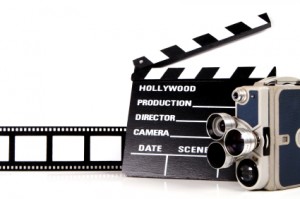 Does Dan (The Da Vinci Code) Brown need a book trailer? Well, no. Dan Brown does not. He’s got two ever-so-suspenseful and special-effects-filled Hollywood movies based on his most popular novels. Novels that sold millions of copies, worldwide, before they were ever adapted for the big screen.
Does Dan (The Da Vinci Code) Brown need a book trailer? Well, no. Dan Brown does not. He’s got two ever-so-suspenseful and special-effects-filled Hollywood movies based on his most popular novels. Novels that sold millions of copies, worldwide, before they were ever adapted for the big screen.

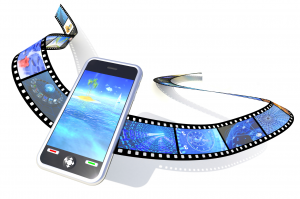 In today’s book publishing world, old publicity techniques are no longer enough. Talking your local paper into writing a small blurb about your opus won’t get you anywhere. Social networking and Internet promotion are the keys to success in the new world of eBooks and print on demand. One way to stir up a lot of really good noise about your book is a multimedia book trailer.
In today’s book publishing world, old publicity techniques are no longer enough. Talking your local paper into writing a small blurb about your opus won’t get you anywhere. Social networking and Internet promotion are the keys to success in the new world of eBooks and print on demand. One way to stir up a lot of really good noise about your book is a multimedia book trailer.
 Bethany Ramos is a full-time freelance writer that co-owns her own business,
Bethany Ramos is a full-time freelance writer that co-owns her own business,